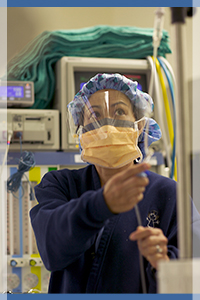Pain Relief with Medication

Your medication options for pain relief may include:
- Opioids (narcotics), which are used to reduce anxiety and partially relieve pain. An opioid is less likely than epidural anesthesia to lead to an assisted (forceps or vacuum) delivery.5 But they are usually used well before delivery, since an opioid can affect a newborn's breathing.
- Epidural anesthesia, which is an ongoing injection of pain medication into the epidural space around the spinal cord. This partially or fully numbs the lower body. A "light" epidural allows you to feel enough that you can push, which reduces full-dose epidural risks of stalled labor and assisted (forceps or vacuum) delivery.
- Pudendal and paracervical blocks, which are injections of pain medication into the pelvic area to reduce labor pain. Pudendal is one of the safest forms of anesthesia for numbing the area where the baby will come out. It can be helpful with fast labor when a little pain medicine is needed close to delivery. It does not affect the baby. Paracervical has been generally replaced by epidural, which is more effective.
Some pain relief medications are not the type that you would request during labor. Rather, they are used as part of another procedure or for an emergency delivery. But it's a good idea to know about them.
- Local anesthesia is the injection of numbing pain medication into the skin. This is done before inserting an epidural or before making an incision (episiotomy) that widens the vaginal opening for the birth.
- Spinal block is an injection of pain medication into the spinal fluid, which rapidly and fully numbs the pelvic area for assisted births, such as a forceps or cesarean delivery (no pushing is possible).
- General anesthesia is the use of inhaled or intravenous (IV) medication, which makes you unconscious. It has more risks, yet it takes effect much faster than epidural or spinal anesthesia. General anesthesia is therefore only used for some emergencies that require a rapid delivery, such as when an epidural line (catheter) has not been installed in advance.

